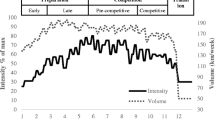Abstract
It is well known that the difference in individual characteristics showed between somatotypes and body components. However, few studies have investigated differences in body components and gender in taekwondo athletes compared to nonathletes. The present study is to analyze the body components and skin-fold thickness of taekwondo athletes compared to nonathletes, and to contribute to current research on rehabilitation and its application and significance. The fat body mass and impedance were significantly decreased in the taekwondo athlete compared with the nonathletic groups. The same values of the men group showed significantly greater decreases than those of the women in both the nonathlete and taekwondo groups. But, the lean body mass, basal metabolic rate (BMR), and total body water were significantly increased in the taekwondo athlete compared with the nonathletic groups. In terms of gender, the values of the men in both the nonathlete and taekwondo groups showed significantly greater increases than those of the women of both groups. However, there were no significant differences between the men and women skin-fold thickness data for all participants. Therefore, these results, in part, found that there was a difference in body components between taekwondo athletes and nonathletes. Also, when applying physical stimuli such as electrotherapy, ultrasound, and heat, the body components of each patient for healthy life need to be carefully considered.
Similar content being viewed by others
References
Kim, M. Y. et al. Comparison study on the daily performance capability and body fat percentage for a healthy life among elderly people using a senior welfare center. Toxicol. Environ. Health Sci. 3, 120–128 (2011).
Kim, I. H. et al. The effect of an early lumbar exercise program on trunk strength and the Oswestry disability index after herniated nucleus pulposus surgery. J. Phys. Ther. Sci. 24, 165–168 (2012a).
Carter, J. E. The somatotypes of athletes-a review. Hum. Biol. 42, 535–569 (1970).
Bale, P. A review of the physique and performance qualities characteristic of games players in specific positions on the field of play. J. Sports Med. Phys. Fitness. 26, 109–122 (1986).
Walker, R. N. & Tanner, J. M. Prediction of adult Sheldon somatotypes I and II from ratings and measurements at childhood ages. Ann. Hum. Biol. 7, 213–224 (1980).
Stunkard, A. J. et al. An adoption study of human obesity. N. Engl. J. Med. 314, 193–198 (1988).
Orvanová, E. Physical structure of winter sports athletes. J. Sports Sci. 5, 197–248 (1987).
Kim, J. H. et al. Change of muscular activity and dynamic stability of the knee joint due to excessive and repetitive jumping or cutting by female athletes. J. Phys. Ther. Sci. 24, 2012b (in press).
Pelin, C. et al. Anthropometric characteristics of young Turkish male athletes. Coll. Antropol. 33, 1057–1063 (2009).
Burns, T. C. & Owens, B. D. Management of shoulder instability in in-season athletes. Phys. Sportsmed. 38, 55–60 (2010).
Wilson, B. R. et al. Somatotype and longevity of former university athletes and nonathletes. Res. Q. Exerc. Sport. 61, 1–6 (1990).
Reinking, M. F. & Alexander, L. E. Prevalence of disordered-eating behaviors in undergraduate female collegiate athletes and nonathletes. J. Athl. Train. 40, 47–51 (2005).
Ball, N., Nolan, E. & Wheeler, K. Anthropometrical, physiological, and tracked power profiles of elite taekwondo athletes 9 weeks before the Olympic competition phase. J. Strength Cond. Res. 25, 2752–2763 (2011).
Santos, V. G., Franchini, E. & Lima-Silva, A. E. Relationship between attack and skipping in Taekwondo contests. J. Strength Cond. Res. 25, 1743–1751 (2011).
Brown-Woodman, P. D. et al. Evaluation of reproductive function of female rats exposed to radiofrequency fields (27.12 MHz) near a shortwave diathermy device. Health Phys. 56, 521–525 (1989).
Conway, J. Assessment of a small microwave (2450 MHz) diathermy applicator as suitable for hyperthermia. Phys. Med. Biol. 28, 249–256 (1983).
Perlmutter, A. P. & Perachino, M. Mechanism of microwave thermotherapy. World J. Urol. 16, 82–88 (1998).
Houk, W. M. & Michaelson, S. M. Safety of microwave devices. N. Engl. J. Med. 287, 938 (1972).
Brown, B. H. & Johnson, S. G. Microwave diathermy. Physiotherapy 61, 117 (1975).
Giombini, A. et al. Hyperthermia induced by microwave diathermy in the management of muscle and tendon injuries. Br. Med. Bull. 83, 379–396 (2007).
Laufer, Y. & Dar, G. Effectiveness of thermal and athermal short-wave diathermy for the management of knee osteoarthritis: a systematic review and metaanalysis. Osteoarthritis Cartilage. 2012 (Epub ahead of print).
Haar, G. T. & Coussios, C. High intensity focused ultrasound: physical principles and devices. Int. J. Hyperthermia. 23, 89–104 (2007).
Watson, T. Ultrasound in contemporary physiotherapy practice. Ultrasonics 48, 321–329 (2008).
Sarvazyan, A., Tatarinov, A. & Sarvazyan, N. Ultrasonic assessment of tissue hydration status. Ultrasonics 43, 661–671 (2005).
Topchyan, A. et al. Ultrasound velocity in human muscle in vivo: perspective for edema studies. Ultrasonics 44, 259–264 (2006).
Kondo, N. et al. Differences in regional sweating responses during exercise between athletes trained on land and in water. Eur. J. Appl. Physiol. Occup. Physiol. 74, 67–71 (1996).
Yamazaki, F., Fujii, N., Sone, R. & Ikegami, H. Responses of sweating and body temperature to sinusoidal exercise in physically trained men. J. Appl. Physiol. 80, 491–495 (1996).
Mirolli, M. The electrical properties of a crustacean sensory dendrite. J. Exp. Biol. 78, 1–27 (1979).
Bloomfield, S. A., Hamos, J. E. & Sherman, S. M. Passive cable properties and morphological correlates of neurones in the lateral geniculate nucleus of the cat. J. Physiol. 383, 653–692 (1987).
Slaughter, M. H. & Lohman, T. G. Relationship of body composition to somatotype. Am. J. Phys. Anthropol. 44, 237–244 (1976).
Orvanová, E. Somatotypes of weight lifters. J. Sports Sci. 8, 119–137 (1990).
Bedogni, G. et al. Accuracy of an eight-point tactileelectrode impedance method in the assessment of total body water. Eur. J. Clin. Nutr. 56, 1143–1148 (2002).
Author information
Authors and Affiliations
Corresponding author
Rights and permissions
About this article
Cite this article
Lee, WD., Lee, LK., Kim, B. et al. Differences in body components and the significance of rehabilitation for taekwondo athletes compared to nonathletes. Toxicol. Environ. Health Sci. 4, 203–208 (2012). https://doi.org/10.1007/s13530-012-0137-2
Received:
Revised:
Accepted:
Published:
Issue Date:
DOI: https://doi.org/10.1007/s13530-012-0137-2




